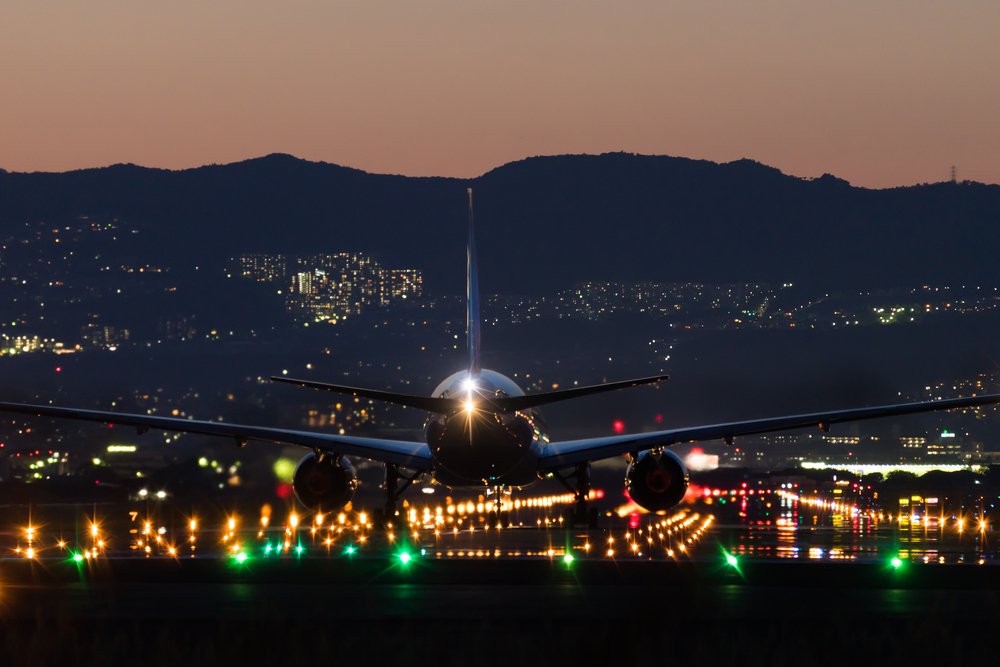Users of night vision goggles (NVGs) are aware of the advantages that night vision for pilots provides in enhancing a pilot’s ability to see in darkness and improving safety during night flights. Nevertheless, as the use of NVG in helicopter operations increases, operators and pilots must be educated about the night vision goggles and how they can be used to improve the aviation industry.
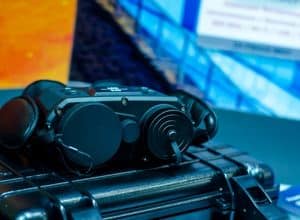
Since 1999, when the United States Federal Aviation Administration (FAA) issued the first supplemental type certificate (STC) to permit the use of NVGs by a civilian helicopter emergency medical services (HEMS) operator in the U.S., night vision for pilots has steadily grown.
Brighter Nights
The brighter scene offered by night vision for pilots — making it possible for pilots to see objects not otherwise visible — enhances safety, increases situational awareness, and improves flight capability.
However, as amazing as these night vision for pilots devices are at improving the ability to fly and see at night, the technology, as many researchers say, “doesn’t turn night into day.”
The most typical mistake by pilots flying with NVGs is “overflying” the aircraft — flying too fast to enable an adequate reaction to the sudden detection of an obstacle.
Such an event raises the need for two more operational metrics that should be, but often are not, applied to NVG flight: recognition range and detection range. Detection range is the distance wherein an object’s presence could be discovered; recognition range is the distance at which a detected object could be identified as belonging to a category, like wires, buildings, vehicles, or people.
External vs. Internal Light
NVGs could also discriminate between light originating inside the cockpit and light originating from the external environment.
NVGs have an “automatic gain control (AGC),” reacting to the ambient light level by boosting the multiplication factor once the ambient light level decreases and reducing the multiplication factor when the ambient light level increases.
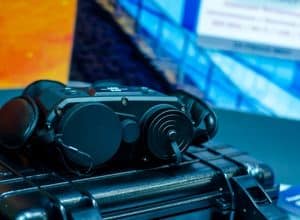
Consequently, if the lower light levels in the cockpit can be “seen” within the NVGs’ FOV, then the AGC decreases the system gain; this leads to a system gain that is not optimized for the external illumination level lessening the pilot’s night vision capability. This problem has driven a new generation of cockpit lighting design, which will allow for internal viewing of instruments but won’t artificially lower NVG performance.
Weighing the Advantages
Operators need to weigh the advantages and disadvantages before deciding whether to implement an NVG system.
Education and Training
When a decision has been made to use an NVG system or night vision for pilots, operators and pilots should be thoroughly aware of the advantages and disadvantages of flight with NVGs. That could be achieved through educational courses covering the essentials of night vision technologies provided by the operator or an outside training company.
These courses should contain material that describes the basic principle, operation, design, maintenance, and care of night vision for pilots. Moreover, FAA requirements call for instruction in relevant aeromedical factors like depth perception, range estimation, visual illusions; terrain and scene interpretation; and NVGs’ abnormal operational characteristics.
An educational program isn’t necessarily limited to classroom lectures. Still, it may also include the use of an eye lane — in which a pilot stands at one side of a dark area and looks through NVGs at an eye chart on the opposite wall to learn to concentrate on the goggles; a terrain board — a miniature layout of the terrain where the pilot will operate; or a simulator, and computer-based or Web-based training.
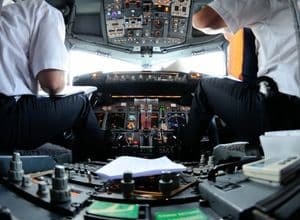
Following an initial classroom introduction to the limitations and principles of NVGs, the next step is to let pilots experience these devices firsthand through operational flights. The main goal of an effective flight training program is to expose pilots to the perceptual variations in NVG-aided night flight compared with unaided day flight to remove any misconception that NVGs can turn night into day.
Flight training should be done by a qualified NVG pilot and should include:
- Both mission-specific and basic tasks and maneuvers, including NVG operational checks and the impact of external/internal lighting systems on NVG performance
- Obstacle avoidance and airspace surveillance
- Departures and approaches, with and without NVGs
- Recovery from inadvertent entry into instrument meteorological conditions
- NVG malfunction procedures
- Transitioning between NVG-aided and unaided flight
Research and experience show that pilots require early exposure to the night environment across various operational environments and conditions to develop excellent night flying skills and practices.
Hardware
NVG hardware considerations fall into procurement, inspection, maintenance, and repair. Available systems might include the earliest generation (GEN) of NVGs, or they might be the newest — GEN III+ intensifier tubes; they’re priced accordingly.
As with any electro-optical system, the sustained proper operation requires regular inspections. On a nightly basis, pilots should perform a brief preflight operational check. First, NVGs should be inspected for functionality — checking tube luminance balance and battery installation— and for obvious damage, like a loose mounting bracket and wires or broken knobs/levers.
Second, all user adjustments need to be verified as functional and then optimized by the pilot for their requirements. The most crucial of these is the focus setting. An available commercial NVG focusing apparatus will produce the most precise focus setting; otherwise, focusing should be done according to the manufacturer’s instructions. Lastly, cockpit lighting should be viewed through the NVGs to ensure compatible instrument lighting and dimming as required.
The NVG and FAA manufacturers recommend that NVGs be inspected every 180 days.
Routine care and maintenance by users are necessary to reduce problems during regular use. Night vision for pilots should be handled like any device with delicate optical components in which optical alignment is vital to proper operation.
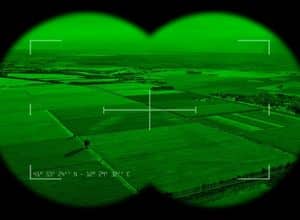
When NVGs aren’t in use, the lens caps should be in place, and the device should be stored in its case to lessen the possibility of shock and damage. Batteries should be removed if the device is not used for an extended period. Regular care should include cleaning lenses with high-quality lens cleaning supplies and wiping the exterior using a soft cloth to remove dirt.
If a system is believed to be defective, repairs should be done only by certified repair personnel. Users should never try to disassemble NVGs.
A logbook should be utilized for each set of NVGs and should consist of a record of hours of usage, reported problems, calibration and inspection dates, and repairs. A record of battery use would ensure that extremely drained batteries won’t be placed in operational use.
Regulations and Guidelines for Night Vision for Pilots
The FAA and different civil aviation regulatory agencies worldwide have recognized the advantages of utilizing devices for night vision for pilots in civil aviation to enhance situational awareness during night operations. Standardized terminology, practices, and policies are essential for the efficient and effective incorporation of NVGs into civil aviation — and this is only possible through government regulation.
Progress in developing comprehensive regulations and guidelines has been slow, spanning the nearly two decades since NVGs began appearing in civilian helicopters.
Nonetheless, the FAA has been soliciting and incorporating recommendations from various aviation organizations over this period.
In 1999, as a collaborative effort involving the FAA and RTCA, EUROCAE, and the European Organisation for Civil Aviation Equipment, special committees were formed to develop guidance for introducing NVGs into civil aviation. This effort produced three guidance documents. In addition, in September 2004, the FAA published a standard technical order that discussed minimum performance standards.

